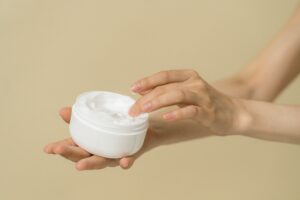Optimize Your Skincare

The skin is the body’s first line of defense against external stressors, and it is important to keep it healthy and balanced. One of the key factors in maintaining healthy skin is the pH level of the skin. In this blog post, we will discuss the importance of skin pH and how to maintain it.
What Is Skin PH?
Skin pH is a measure of the acidity or alkalinity of the skin. The skin’s pH is slightly acidic, with a range of 4.5 to 5.5. This acidic pH level helps to protect the skin from harmful bacteria and maintain the skin’s moisture levels.
Why Is Skin PH Important?
Maintaining a healthy skin pH level is crucial for the skin’s overall health. An imbalanced skin pH level can lead to a number of skin problems, including dryness, irritation, acne, and other skin infections. An unhealthy skin pH level can also lead to premature aging, as it weakens the skin’s protective barrier.
How to Maintain Skin PH
-
Use a Ph-Balanced Cleanser
When it comes to cleansing your skin, it is important to choose a pH-balanced cleanser that won’t strip your skin of its natural oils. Harsh cleansers can disrupt the skin’s natural pH balance, leading to skin problems. Instead, look for a gentle cleanser with a pH level between 4.5 and 5.5. This will help to maintain your skin’s natural pH level and prevent any damage.
-
Avoid Over-Cleansing
Over-cleansing your skin can also disrupt your skin’s natural pH balance. It is recommended to cleanse your skin no more than twice a day, once in the morning and once at night. Avoid washing your face with hot water, which can strip your skin of its natural oils.
-
Use a Toner
A toner can help to restore your skin’s pH balance after cleansing. Look for a toner that is pH-balanced and free from alcohol. Toning your skin after cleansing can help to remove any remaining dirt and oil, while also preparing your skin for your moisturizer.
-
Choose a PH-Balanced Moisturizer
Just like your cleanser and toner, it is important to choose a moisturizer that is pH-balanced. This will help to maintain your skin’s natural pH level and prevent any imbalances. Look for a moisturizer that contains natural ingredients, such as aloe vera or chamomile, which can help to soothe and hydrate your skin.

-
Limit Your Use of Exfoliants
Exfoliants can be beneficial for removing dead skin cells and promoting cell turnover, but it is important to use them sparingly. Overuse of exfoliants can lead to damage to the skin’s protective barrier, which can cause an imbalance in your skin’s pH level. It is recommended to use exfoliants no more than once a week.
-
Protect Your Skin From Environmental Stressors
Environmental stressors, such as pollution and UV rays, can damage your skin and disrupt your skin’s natural pH balance. Protect your skin by wearing a broad-spectrum sunscreen, which can help to block both UVA and UVB rays. You can also protect your skin from pollution by wearing a hat and protective clothing.
-
Eat a Balanced Diet
Your diet can also affect your skin’s pH level. Eating a diet high in alkaline foods, such as fruits and vegetables, can help to balance your skin’s pH level. It is also important to drink plenty of water, which can help to keep your skin hydrated and healthy.
By following these tips, you can help protect and enhance your skin’s natural barrier, keeping it healthy and glowing. Remember, maintaining a healthy pH balance is key to achieving and maintaining beautiful, healthy skin.

